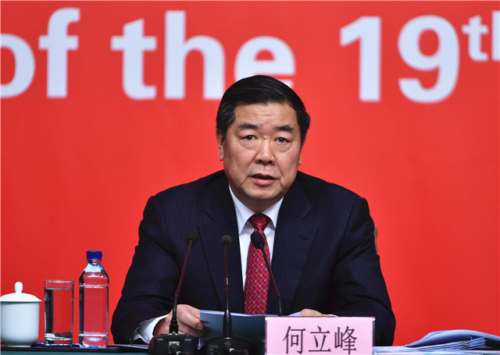The Tatsu Maru incident in the waning years of the Qing
In 1908, Qing customs officials boarded the Japanese steamship Tatsu Maru to seize weapons allegedly earmarked for revolutionaries. The ship's captain objected. The drawn-out diplomatic dispute that followed made international headlines.

This Week in China’s History: February 5, 1908
On the morning of February 5, 1908, the Japanese steamship Tatsu Maru anchored in the waters off Macau. Not particularly noteworthy when it departed Yokohama in late January, the Tatsu Maru came to the attention of Qing customs officials when informants in Japan alleged that something about the ship bore closer scrutiny.
Specifically, the informant claimed that the vessel was not, as its manifest stated, bound for Hong Kong with 3,000 tons of coal. The steamer was running guns — weapons bound for revolutionaries in China, via agents in Macau. When the Tatsu Maru diverted to the Portuguese territory — which required a detour of nearly 100 miles — suspicions seemed confirmed.
In mid-afternoon, in deep water and many miles from its destination, the Tatsu Maru began unloading its cargo onto small boats that came alongside. Four Chinese gunboats quickly approached and surrounded the steamer. And in their wake followed two armed Portuguese vessels. In the waters off the mouth of the Pearl River, three different territorial claims came together: Hong Kong waters claimed by Great Britain, Macanese waters claimed by Portugal, and Qing territorial waters claimed by the imperial government. Each was under different jurisdiction and different laws, and establishing precise boundaries on water was difficult; just where the Tatsu Maru lay at anchor made all the difference.
Acting on the information they had been given, Qing customs officials boarded the Japanese vessel over the objections of the ship’s captain, who claimed they had no jurisdiction.
On the ship’s deck were 94 cases of rifles — 1,500 guns altogether — and 50 cases of ammunition, none of which appeared on the ship’s manifest. While the Chinese assessed the contraband, they struck the Japanese colors and replaced them with a Qing ensign. The officials then seized the ship’s cargo and crew, and impounded the Tatsu Maru at Whampoa island near Guangzhou.
The obscurity of the case today belies how important the incident appeared at the moment.
For the next month, the Tatsu Maru was on the front pages of newspapers across the world as onlookers wondered whether this was the start of the next war. Bearing in mind that Japan had gone to war twice in the preceding decade, the fear was not far-fetched.
The Japanese and Chinese sides viewed the events of the day very differently. For the Qing, the Tatsu Maru was a smuggler caught red-handed. For years, the Qing government had suspected that guns were being run from Japan into Hong Kong and Macau — sometimes smuggled, sometimes legally imported. From there, they were making their way into the hands of revolutionary groups — including the Revolutionary Alliance headed by Sun Yat-sen (孙中山 Sūn Zhōngshān) — that were bent on overthrowing the dynasty. The dynasty knew it had a problem, and it knew the problem was based in Guangdong, fueled by the colonial ports.
In this case, it seems that the British firm in Hong Kong that had contracted for coal knew nothing of the weapons on board the Tatsu Maru; smugglers had in effect subcontracted the vessel to carry their guns. The ship’s captain hoped, after the Macau detour, to make his way unnoticed to Hong Kong, where the coal would be offloaded. Unfortunately for the plan, the Qing network of informants tabbed the Tatsu Maru for what it was and intercepted the weapons.
For the Japanese, the boarding of the Tatsu Maru was a breach of sovereignty, exacerbated by the striking of the Japanese colors. The Japanese shipping company that owned the vessel claimed that the weapons had been legally purchased for import by a firm in Macau, and the Qing government was unable to prove otherwise. Furthermore, Qing officials had stopped and boarded the ship not in Chinese waters, but in Macanese territory, outside their jurisdiction. China had illegally interfered in normal commerce, violated Japanese national sovereignty, and acted outside its legal rights. Replacing the Japanese flag with a Chinese one was the last insult. Technically speaking, the Qing government had committed an act of war against Japan.
The Japanese government apparently considered intercepting the Chinese vessels on their way to impound the Tatsu Maru at Whampoa, but instead chose diplomacy. The Japanese government formally protested the seizure and also the replacing of the Japanese flag. A story in the Chicago Tribune was typical: under the headline “Japan and China on war’s brink,” the paper reported that Japan demanded “the restoration of the steamer and its cargo and the payment of a full indemnity.” Failure to comply within “a reasonable time” would result in “immediate action.”
The Qing government was in a delicate position. There was little doubt that the Japanese navy could easily enforce its claims. Faced with this prospect, the Chinese government tried walking back its position, apologizing for its actions against the Japanese flag (which were never adequately explained), agreeing to pay an indemnity for that, and promising to return the Tatsu Maru. The only condition the Chinese government insisted on was that it retain the cargo of guns it had confiscated, which it expected to wind up in the hands of its enemies. Even this, the Japanese government refused. As the stand-off wore on, it became increasingly clear that the Qing government would have no choice but to eventually comply with Japan’s demands. On March 15, the Tatsu Maru was released, along with an apology for Qing actions and a payment of more than 21,000 yen for the arms that had been seized.
But the Chinese side was not unified on the issue. The central government had achieved its goal of de-escalation, but in Guangzhou, both the public and official sentiment was outrage. Without diplomatic or military recourse, the people of Guangzhou deployed a weapon first used in 1905 against the United States: boycott.
The sources of the boycott were a mix of progressive and nationalist forces in late-Qing China. Historian Sin-kiong Wong has described the Tatsu Maru incident and its repercussions, identifying Chinese merchants, students returned from Japan, reformers reeling from the demise of the 1898 100 Days, and even Qing officials like Guangdong governor-general Zhāng Rénjùn 张人骏. The movement quickly spread from Canton to other coastal cities, including Shanghai, where the Japanese consul-general demanded that the Qing government intervene. Wong’s research shows that the boycott spread beyond the Qing’s borders to Chinese communities in Australia, Southeast Asia, and the United States. Eventually, the central government outlawed the boycott (although officials observed that the government could not legislate against people only buying Chinese-made products).
It is tempting to see this 1908 boycott as part of a nationalist trajectory, one that culminates in the overthrow of the Qing and the May Fourth Movement a few years later. Without doubt, the assertion of Chinese national pride against both foreign interference and its own government’s weakness is clear in the boycott. But the regional origins of the boycott ought not be ignored. The movement can be cast as Chinese against Japanese interests, but the suppression of the boycott was carried out by the Qing government in Beijing, and many of its staunchest supporters were government officials in Guangdong. The entire Tatsu Maru incident illustrates that it was anti-Qing forces — Chinese forces — who were mobilizing against the government in the north.
The recent arguments over Cantonese language and identity, centering on events in Hong Kong but including recently the endowment to fund the teaching of Cantonese at Stanford, underscore that the definition of “nation” is not self-evident. The center of power was in the north, but the revolutionary movement that led to the Republic was in the south. The tension between the two has not disappeared.
This Week in China’s History is a weekly column.





